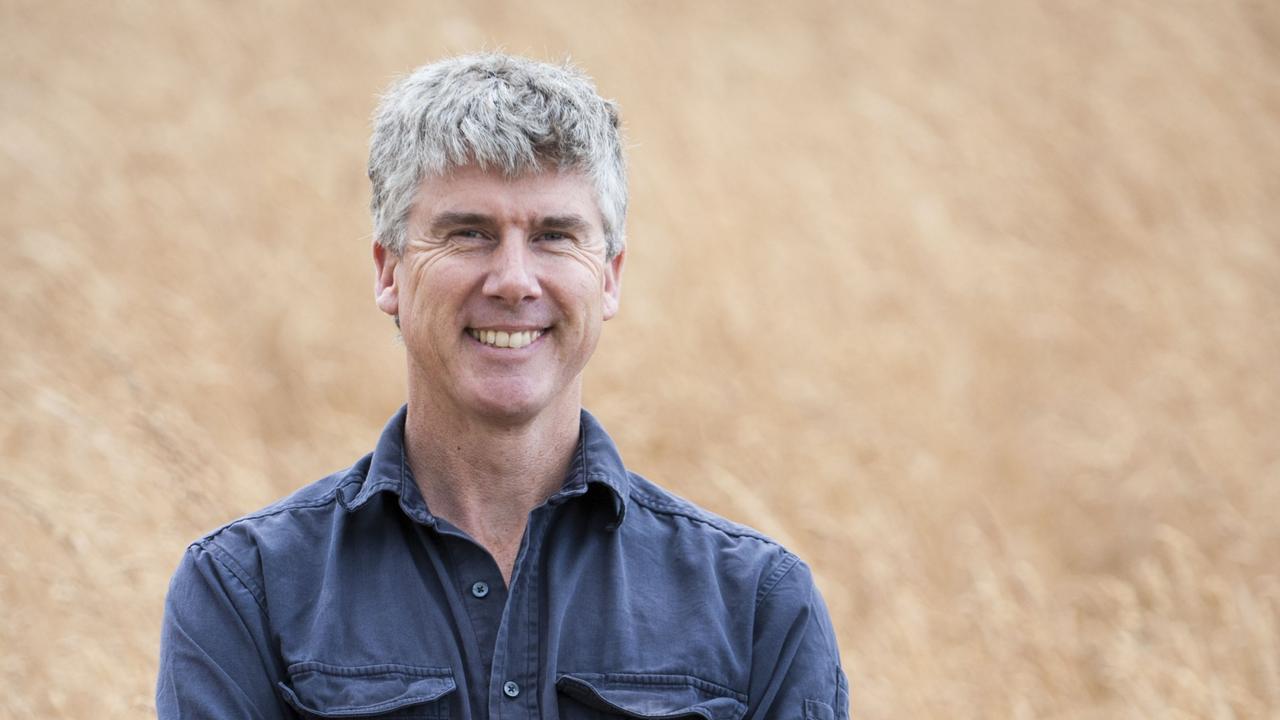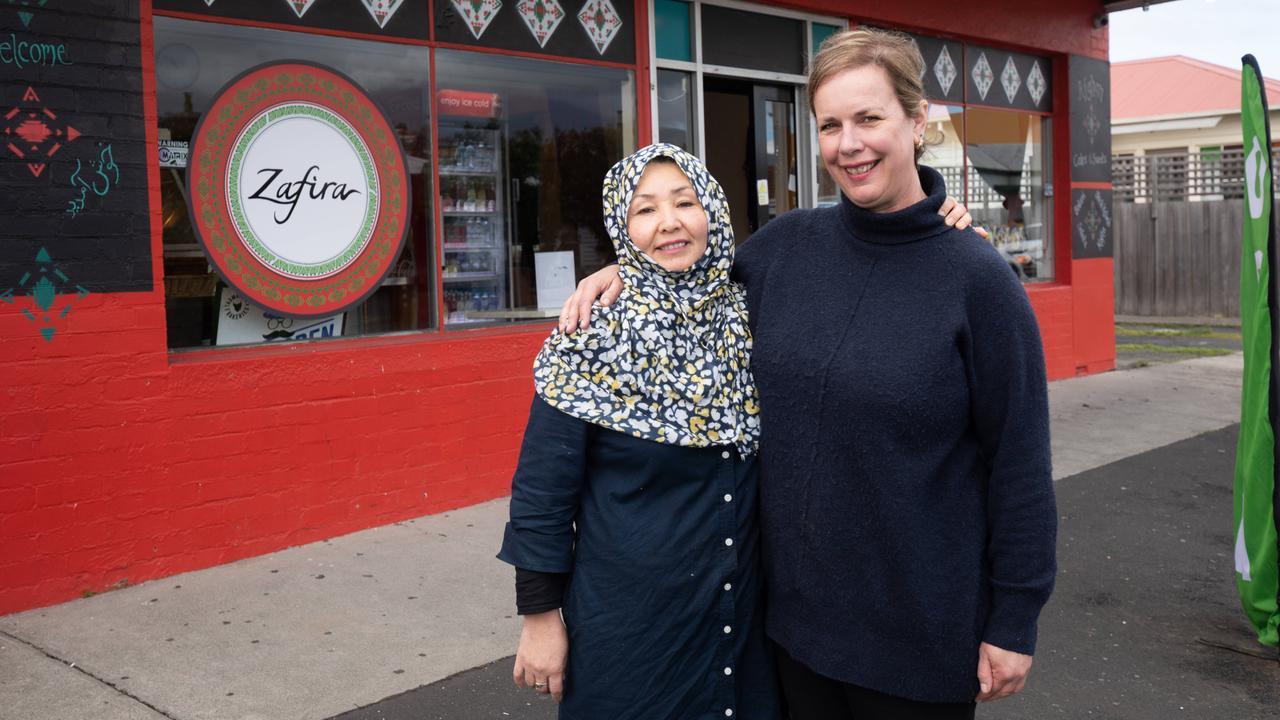Smashingly good fun for kids at the Dark Mofo Winter Feast in Hobart
Food writer ELAINE REEVES discovers the smashingly good fun for children at the Fire and Ice sessions at Dark Mofo’s Winter Feast
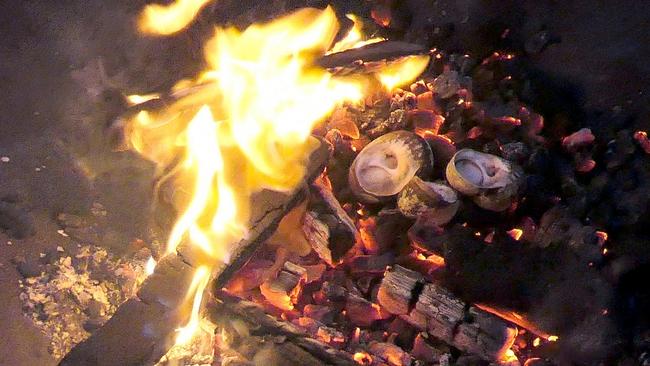
Taste Tasmania
Don't miss out on the headlines from Taste Tasmania. Followed categories will be added to My News.
FOR the first hour of each evening of Hobart’s Winter Feast there is interactive food for kids. This not only allows them to thump down on a cooked potato or smash a warrener shell with a rock — they can find out how First Australians gathered and prepared oysters, warrener and herbs.
Kids can also pick the brains of Aboriginal elders at each of the three stands and remember the information by photographing the blackboard at the sites. The one at the oyster stand tells us winter is the right time for gathering angasi oysters and that “eating them only in season means there will be plenty for next year”.
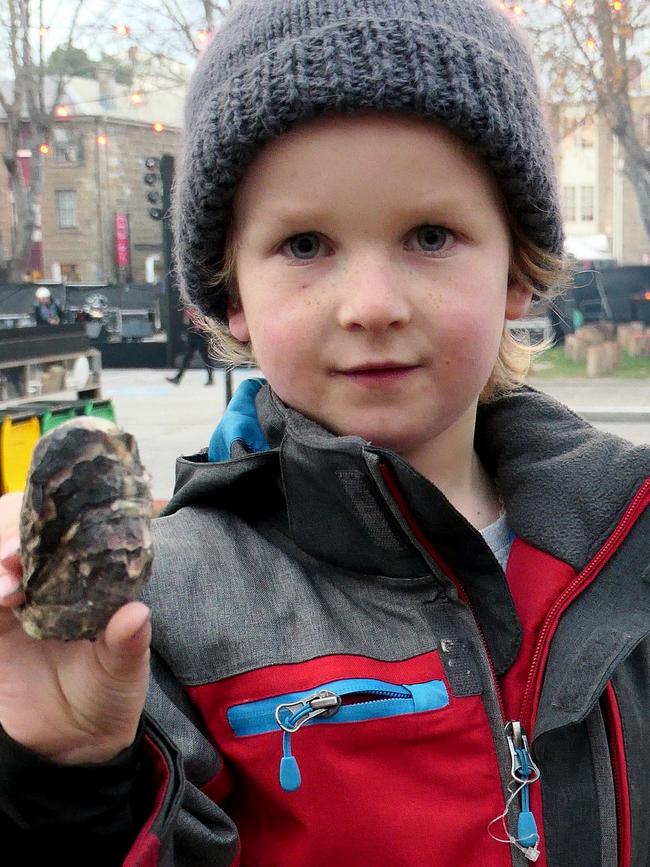
Rather than put on chain mail gloves and have a go at shucking oysters provided by Ashmore Seafoods and seeing if he could taste the difference between the native angasi and farmed Pacific oysters, Maxwell Roberts, 4½, was interested only in “taking photos of whatever is cool around here”.
Into this category came the tables at the oyster bar on the Princes Wharf 1 deck. Made by the Antarctic Ice Company, they were blocks of ice lit from within and featuring within their frozen depths abalone resting in a bed of bull kelp.
While the evidence for oyster eating in the past is there in the middens, for potatoes, there’s not so much. On a 10m-long table in front of the main stage are piles of cooked potatoes. Kids take a square of cardboard, place a dollop of sour cream on it, then a potato, put greaseproof paper on top, then more cardboard, and smash down to flatten the spud.
MORE ELAINE REEVES:
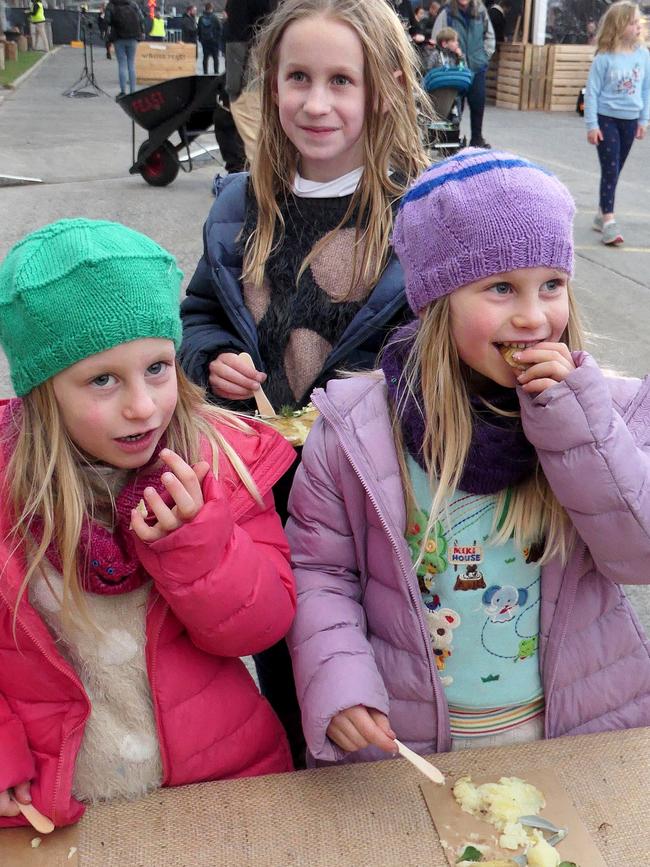
Then comes the indigenous aspect. The potatoes can be sprinkled with a vivid purple salt coloured with pepperberry, crispy grey saltbush, kunzea, which has a citrus eucalyptus flavour and ice plant leaves that taste like salty spinach. The only thing kids I spoke to had doubts about was the sour cream.
Jo Cook, curator of the Winter Feast from its inception seven years ago, designed this “Fire and Ice” program for children. The inspiration for the smashed potatoes was chef Einat Admony of Miznon in Melbourne. Expect whole roasted cauliflowers when a team from Miznon pairs with Hamlet Cafe at the Feast this week.
The indigenous ingredients have been sourced and described with help from many of the participants in last year’s palawa fire pit at the Feast, at which Rodney Dillon said: “the best way to get to know people is by their food.” Tasmania’s only Aboriginal commercial fisherman Bryan Denny supplied the warrener, or native periwinkles.
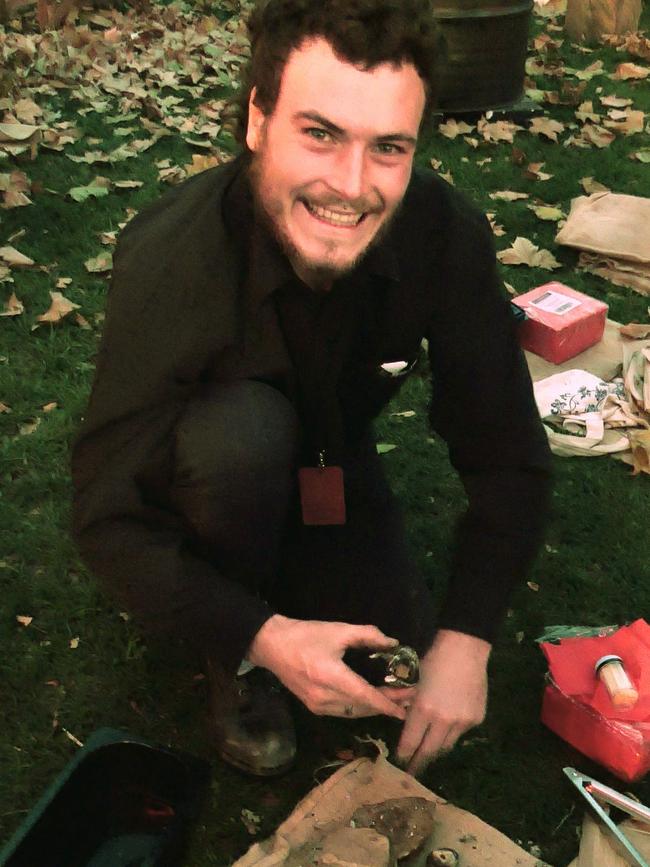
Just along from the main stage towards the Silos building, Trent Prouse and Harley Mansell were supervising their cooking over an open fire, and then the smashing of the turban shells to get to the warrener inside. Esther Holman, 8, told me they tasted “of sea water, very salty, a bit like fish”. Very acceptable obviously, as she had just downed her fourth one.
No kids in tow? At stall 57 outside, is Tim Sculthorpe’s new business, palawa kipli, or Tasmanian Aborigine food. Tim was the cook and organiser of waranta krakani (We Sit Together) at Macquarie Point in May, a five course meal with art, music and stories.
For the Feast, he has bush tuckos with payathanima (wallaby), pickled onion and samphire and a sticky date pudding with wattle seed ice cream, and, for $2 extra, caramelised crickets.
Tim says he has not been out chasing down crickets (they are not in season). These are farmed by Louise Morris at Rebel Food at Derby. Such has been the interest, that now Tim is selling $2 tastes of just the crickets.
The Winter Feast continues daily from 4pm tomorrow to Sunday. Free for under-16s, and, on Sunday, free for everyone.

